Where Do Facelift Scars Go? Understanding Incision Lines and Scar Placement
2025-07-14
This article is based on Dr. Park’s upcoming lecture for the Korean Society of Plastic Surgeons in October 2025.
It aims to help patients better understand what really matters when it comes to facelift scars and incision planning.
Facelift surgery isn't just about lifting the SMAS layer.
It's about crafting the right facelift incision line to achieve both natural results and well-hidden scars.
Let’s explore what creates good vs. bad facelift scars, and how modern techniques in Korea aim for maximum results with minimal trace.

What Is SMAS—and Why It’s Not the Whole Story
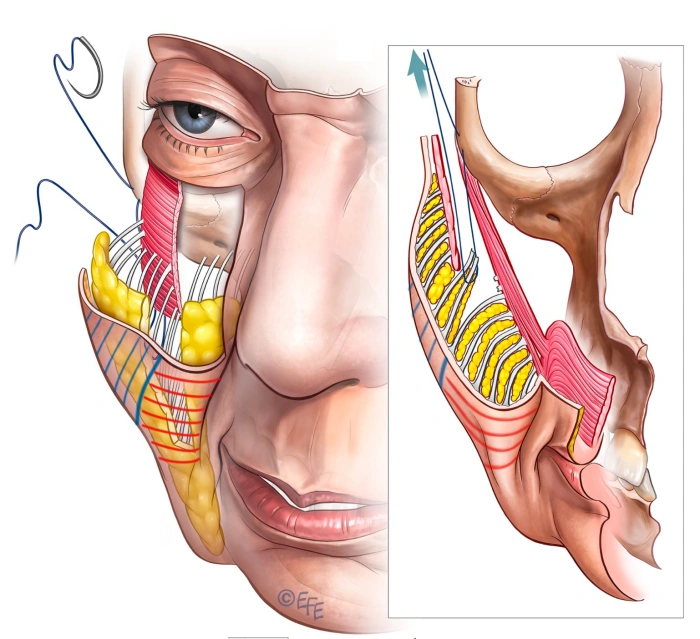
If you've consulted rhytidectomy procedure with a facial plastic surgeon in Korea, you've probably heard of SMAS—the deeper facial layer commonly lifted in modern face lifts.
Some clinics even market it as a “magic word” that guarantees success.
But in reality, the SMAS is just one piece of the puzzle.
Equally important—but often overlooked by patients—is the incision strategy, which determines:
- How visible the face lift scars are
- Where the skin tension is distributed
- Whether the final result looks natural or pulled
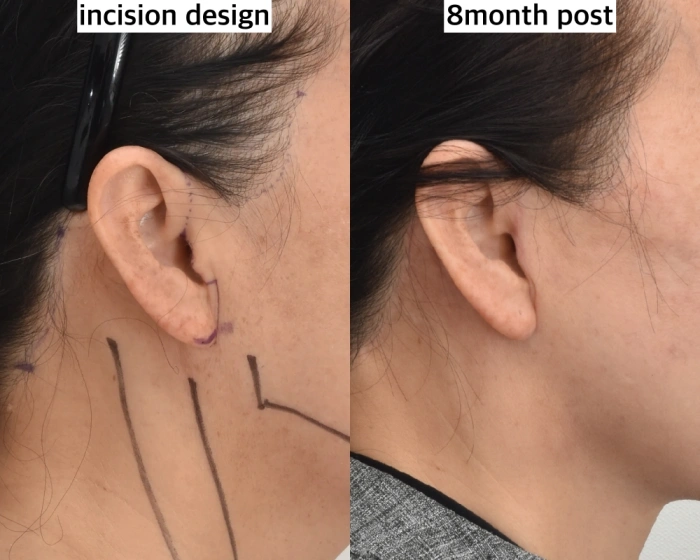
In this post, we’ll focus on the importance of face lift incision placement—something just as vital as what’s happening beneath the skin.
Where Are Face lift Incisions Made?
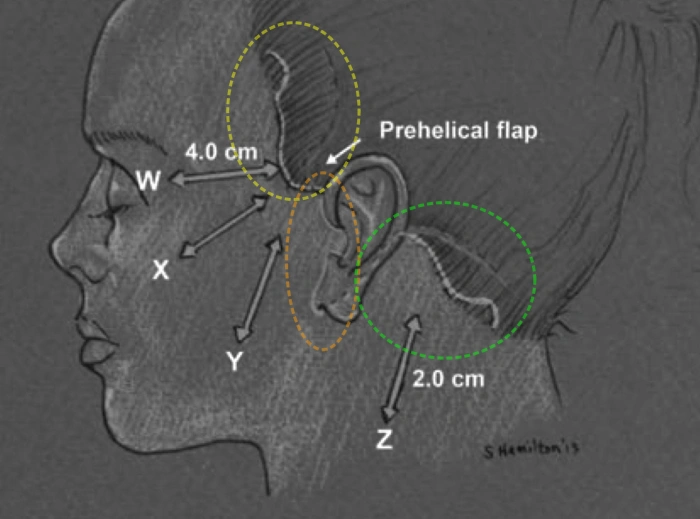
Most modern face lifts use incisions in three key areas:
- The temple and sideburn region
- The front of the ear (preauricular area)
- The behind the ear (retroauricular area)
Each of these locations offers two main types of incision plans. When choosing the right approach, we take into account your hairline, degree of skin laxity, age, and hairstyle preferences.
Let’s break them down.
1. Temple & Sideburn Incisions
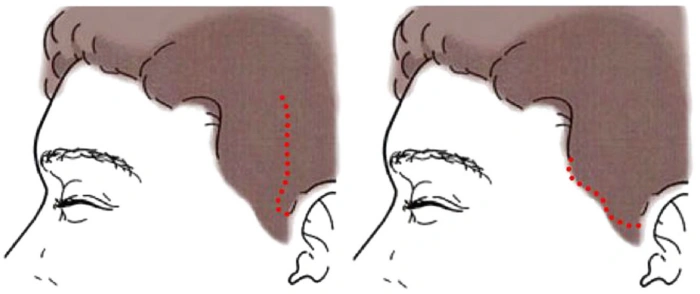
The temple area can be approached in two ways, as shown in the illustration above: either placing the incision within the hairline or along the front edge of the hairline.
Each method has its own pros and cons, as outlined below.
Incision Type | Recommended For | Pros | Cons |
Within the hairline | Mild sagging | Less visible facelift scar | Can distort hairline or shorten sideburn |
Along the hairline | Moderate to severe sagging | Preserves sideburn and hairline | More visible scar; longer surgery |
An incision placed within the hairline may cause the sideburns to become shorter—or even disappear—if significant skin tightening is required, so careful planning is essential.
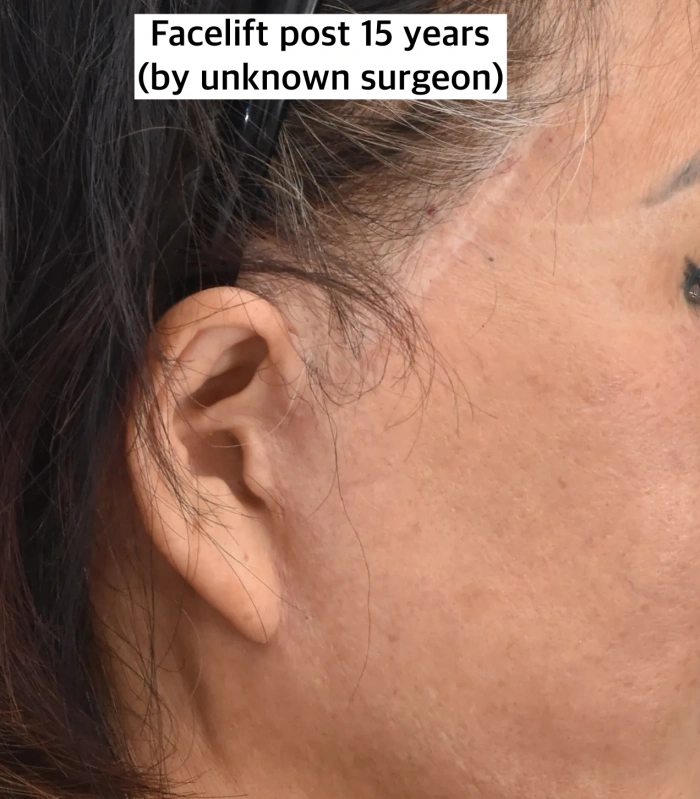
Also, the longer the distance from the outer corner of the eye to the side hairline, the more aged the face tends to appear.
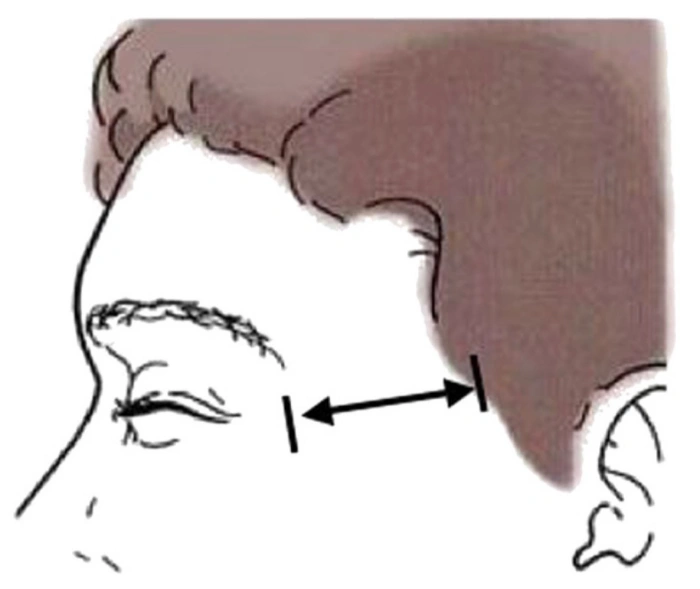
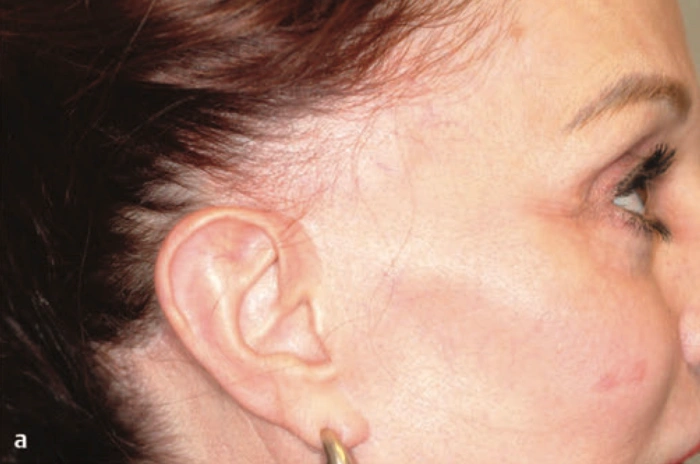
On the other hand, when placing the incision outside the hairline, the design must take into account the length and thickness of the sideburn hair.
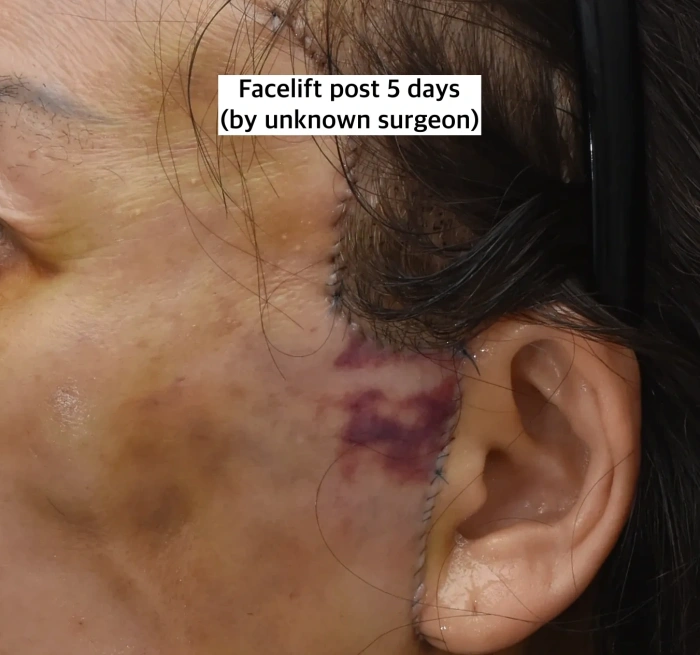
2. Preauricular (In Front of the Ear) Incision
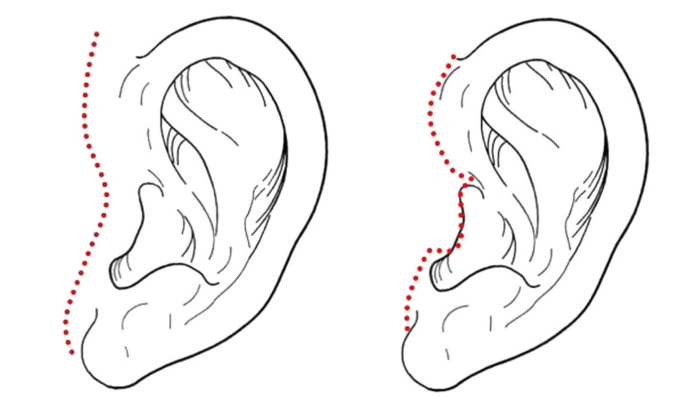
This incision is placed around the tragus (the small square cartilage in front of the ear).
It can be either pretragal (in front of the tragus) or retrotragal (behind the tragus).
Incision Type | Best For | Pros | Cons |
Pretragal | Beginners or scar revision | Preserves tragus shape; easier access | Higher risk of visible scars or color mismatch |
Retrotragal | Experienced surgeons | Best scar concealment | Higher technical difficulty; possible cartilage distortion |
Pretragal scars that develop after pretragal incision can sometimes become visible, especially if the incision was placed directly in front of the ear or if proper tension and closure techniques were not used.
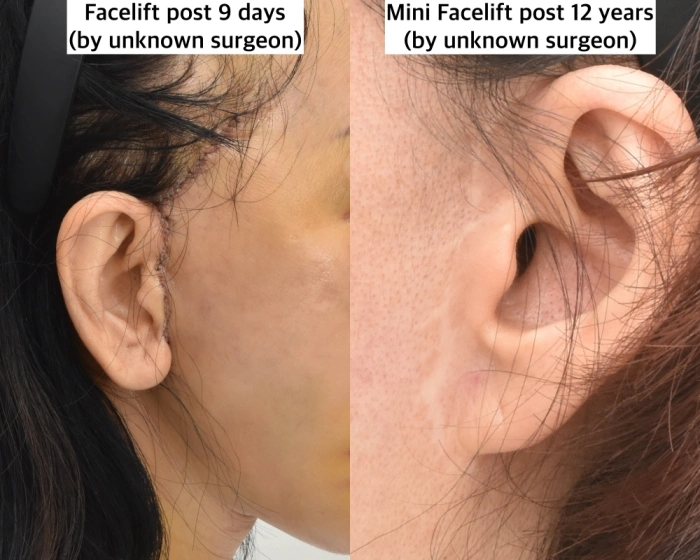
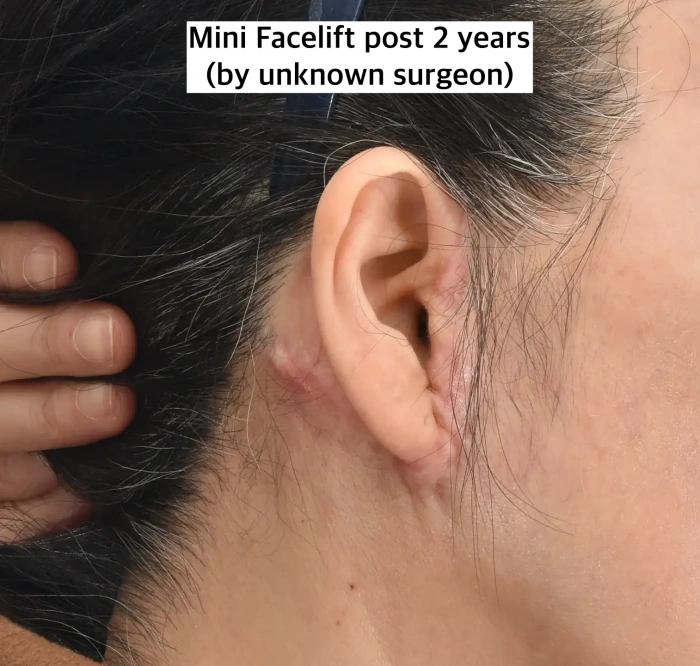
If the incision is made behind the ear cartilage, the scar can be well hidden. However, if performed by an inexperienced surgeon, there is a risk of distorting the natural contour of the ear cartilage, so caution is advised.
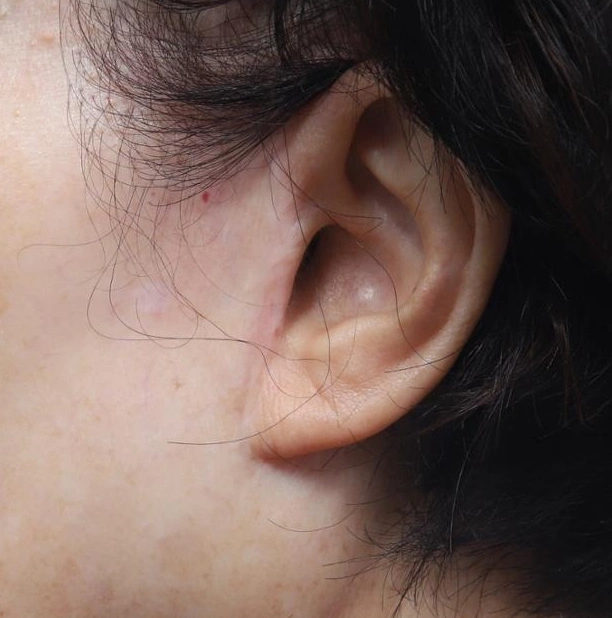
Therefore, the retrotragal incision is typically preferred by experienced surgeons who are skilled enough to avoid potential complications.
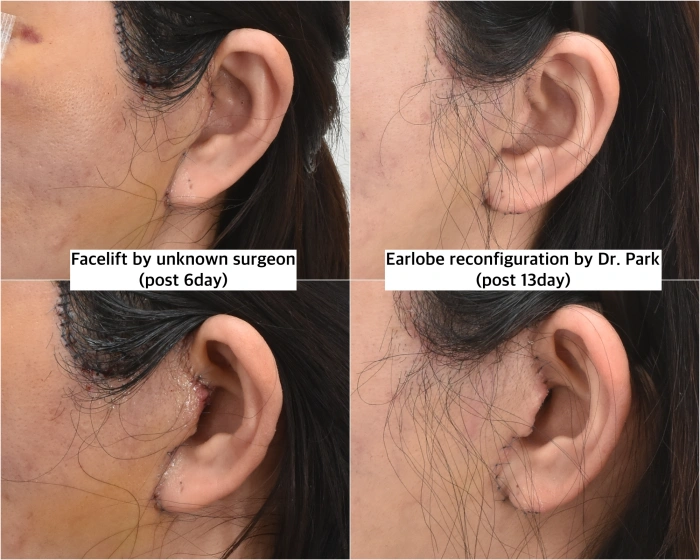
A Noonopi case of early correction for pixie ear and loss of ear cartilage following a facelift performed at another clinic.
The case above involves a patient with an attached earlobe, where tragus blunting was anticipated. Even in the early stages of healing from her previous surgery, the patient expressed a desire for revision. Dr. Park performed the correction to restore a more natural appearance.
Facelift scars aren’t limited to hypertrophic or raised tissue—subtle yet visible signs like earlobe distortion or tragus blunting are also considered telltale signs of a poorly executed face lift. At Noonopi Plastic Surgery, we take these details seriously to deliver natural, harmonious, and aesthetically pleasing results.
3. Behind the Ear (Retroauricular) Incision
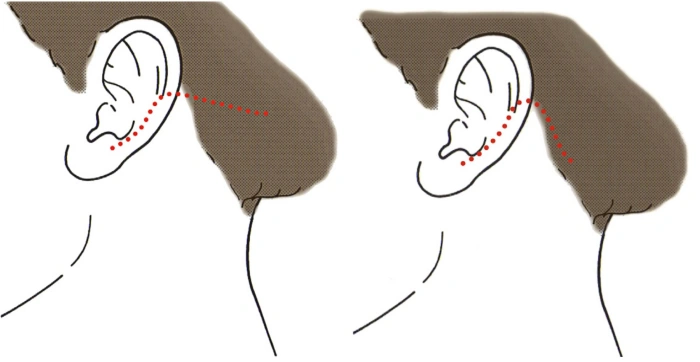
Similar to temple incisions, face lift scars behind the ears can be placed as Within or Along the hairline.
Incision Type | Recommended For | Pros | Cons |
Within hairline | Mild lifts | Shorter surgery; minimal scar risk | Risk of visible hairline distortion if pulled tightly |
Along hairline | Most full face lifts | Natural hairline preservation | Longer surgery; scar more visible with tied-up hair |
Incision sites like the temple or in front of the ear may vary depending on the surgeon.
However, when it comes to the posterior ear (retroauricular) incision, most experienced face lift surgeons prefer placing it along the hairline, unless there’s a specific reason not to.
Why? In patients who require significant skin tightening, placing the incision inside the hairline can result in an unnatural, "stepped" hairline—especially noticeable when wearing a ponytail or pulling the hair back. To avoid this visible distortion, the hairline-tracing incision is the preferred approach among many skilled surgeons.
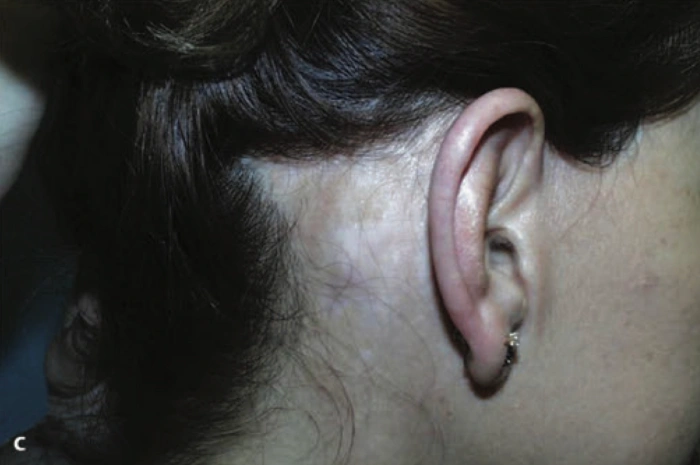
Why Cut Near the Ear even My Sagging is in Nasolabial and Jowls
Most patients are bothered by central sagging—nasolabial folds, cheeks, or jowls.
So why do surgeons make incisions near the ears and not around the midline portion of the face?
It’s simple: scar placement matters.
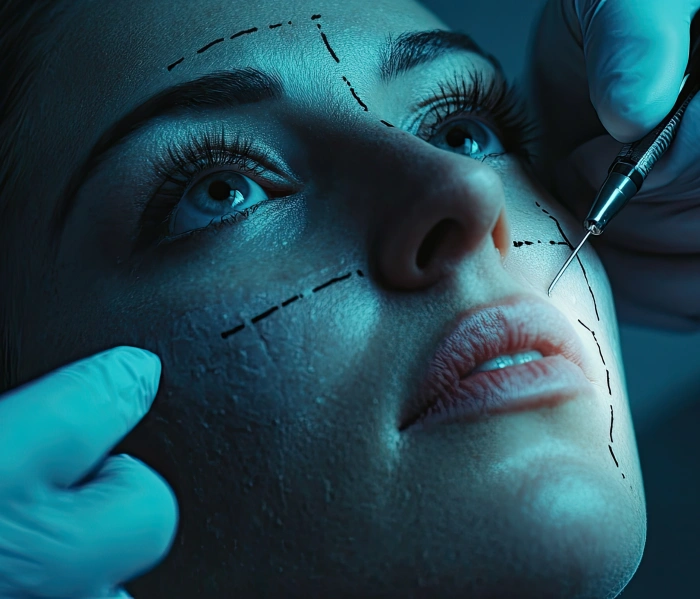
If we made an incision right in the nasolabial fold, we could lift everything directly—but at the cost of an obvious, central scar.
That’s why facelift incisions are done around the ears and hairline, where the skin can be elevated (dissected), repositioned, and trimmed with minimal visible scarring.
This "skin dissection", allows the surgeon to reach the center of the face without leaving scars in the middle.
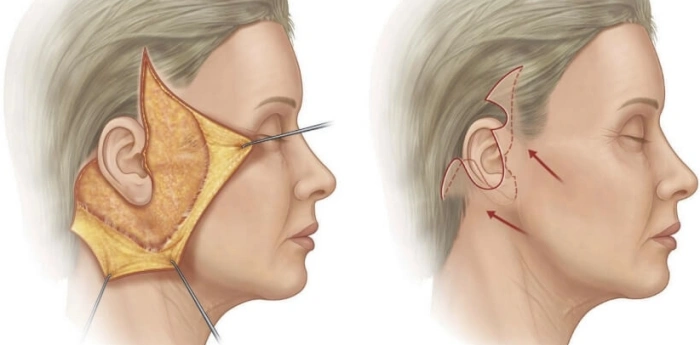
To ensure clear surgical visibility, safety, and effective results, the incision needs to be of a certain length.
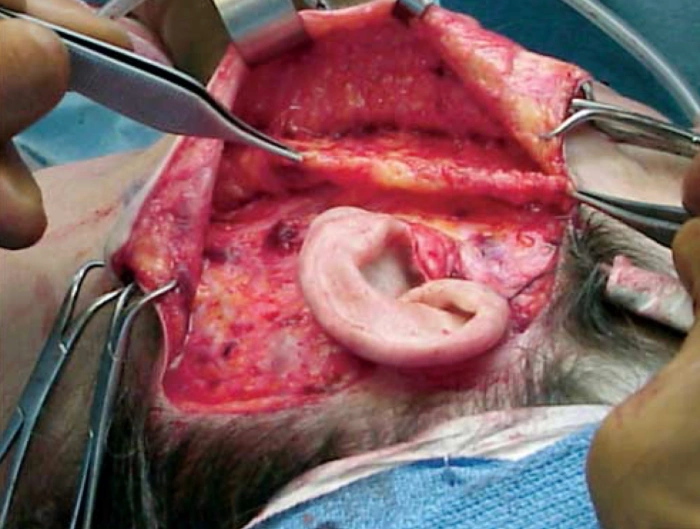
What About Pony-tail Facelifts? Isn’t Less Cutting results Better Scars?
Pony-tail facelift or short scar face lifts are attractive because they involve smaller incisions and shorter downtime.
But less cutting means:
- Less access
- Less redraping
- Less skin removal
- Less lift
In younger patients with mild sagging, this may be work.
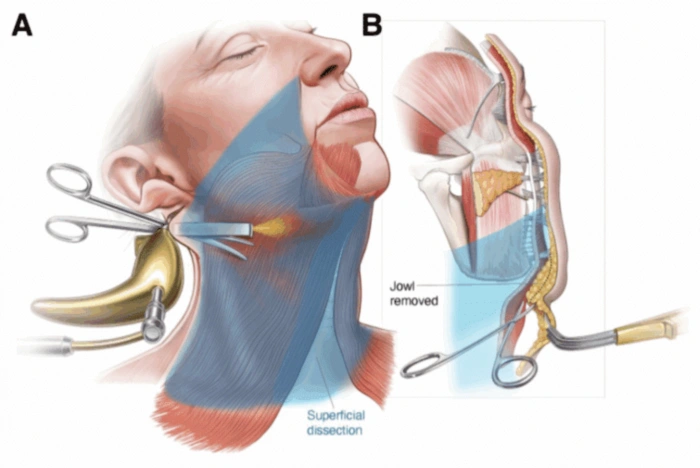
For most people in their 50s or older, a mini face lift is unlikely to deliver long-lasting or natural-looking results.
Face lift surgery often involves a trade-off:
Short incisions mean minimal scarring but offer limited lifting and tightening.
Longer incisions carry a higher risk of visible scarring—but in the hands of an experienced surgeon, this can be carefully managed to achieve much more effective and lasting correction.
Face lift Scars Are Inevitable—But Can Be Invisible
There is no such thing as a scar-free facelift.
But the goal is not to eliminate the scar—it’s to hide it intelligently.
A well-designed facelift incision line, combined with tension-balanced suturing and individualized planning, will:
- Heal naturally over time
- Be camouflaged by natural shadows and hairline
- Be nearly invisible after a few months
That’s why surgical technique alone is not enough. A surgeon must understand your skin type, hair density, aging pattern, and aesthetic goals to place the incision where scars from a face lift won't be noticed.

If you want a consultation with board-certified plastic surgeon in Korea who can offer a customized surgical plan, 📱WhatsApp us.


